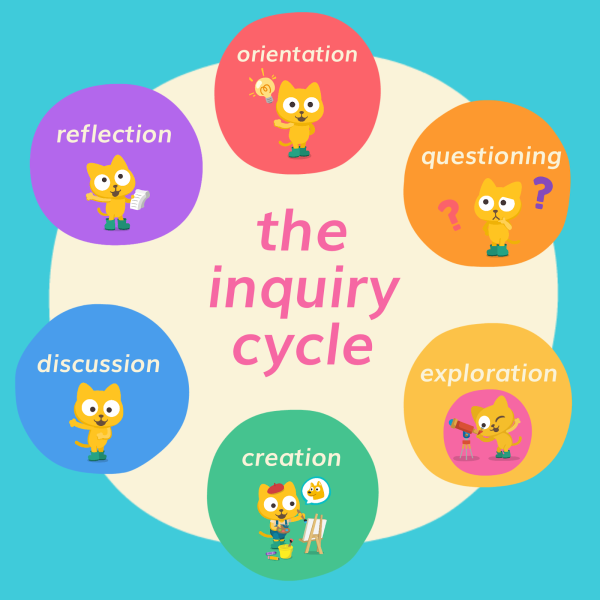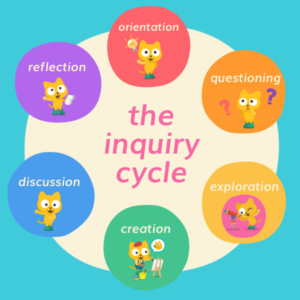Inquiry-Based Learning: What is it all about?
Inquiry-based learning – It’s a phrase that is becoming more familiar. In most classrooms, the model of student learning is fairly straightforward: the teacher presents knowledge of a topic to their students, who then absorb the information and demonstrate their understanding through an assessment.
We’re all familiar with this model, and it seems to have served us reasonably well over the years. But recently, educators have started to wonder whether this is really the way we should be teaching our students.
As more and more research emerges surrounding the ways that people learn, some classrooms have started to implement new models of education. One of these is called inquiry-based learning, and it has transformed the way that many teachers and students experience education.
What is inquiry-based learning?
“Inquiry” refers to questioning, and according to some, even “truth-seeking.” It can be argued that people engage in inquiry throughout their lives, from the moment they are born and begin seeking to understand the world around them.
Inquiry-based learning is a way of structuring classroom learning to fit this natural process of asking questions. In an inquiry-based classroom, students are exploring topics and asking questions based on their own desire to learn, rather than searching for answers that the teacher wants them to find.
What does it look like?
Inquiry-based learning is a process, or a cycle, that students move through. Because it is based on students’ own curiosities, inquiry will look different in every classroom.
Still, many people have attempted to capture it in an acronym or a set of chronological steps in order to help us make sense of how it should look.
Depending on who you ask, the inquiry process can have as few as three steps or as many as twelve. These go by many different names, and include many different types of activities. It can be hard to pin down exactly what inquiry-based learning really is, as educators and scientists all seem to have a different definition of what it should entail.
But at its core, inquiry-based learning is natural learning—it’s the way scientists discover a new species, artists create a new technique, mathematicians solve puzzles and historians uncover details about the past. Inquiry is curiosity in action.
And curiosity doesn’t have a distinct starting or ending point. When cultivated, curiosity can grow into new questions and lead to even more avenues of inquiry and discovery. Because of this, I prefer to think of inquiry as a moving cycle rather than a set of distinct steps.
The cycle of inquiry may look different for different learners, but essentially, inquiry-based learning looks something like this:

The Inquiry Cycle
Orientation:
Students are introduced to the topic in a broad sense. They learn the basics and get a taste of some of the most exciting aspects of the subject, and their neurons start to fire with questions and curiosities.
Questioning:
Students ask questions about the topic based on their own curiosities. They may make predictions or hypotheses about what they’ll learn.
Exploration:
Students use any and all resources available to them to explore information and find answers to their questions.
Creation:
Students create a product, model, or demonstration to show what they’ve discovered and explain what they’ve learned.
Discussion:
Students deepen their understanding of their own learning by discussing it with their peers and teacher.
Reflection:
Students reflect on their learning process, and determine how they can ask more questions or create something new.
Why should we use inquiry-based learning?
Because inquiry-based learning is powered by students’ natural desire to learn, this model leads to more active student engagement and deeper understanding of the topics they explore. It increases students’ ability to research independently and become more self-directed learners, and it provides essential context for everything they learn in school.
With the world changing rapidly and unexpectedly, it is impossible for teachers to know exactly what their students need to learn. Instead of filling their heads with our knowledge, it’s now our job to show them how to be curious, how to solve problems, and how to change the world of their own volition.
How can I start using more inquiry in my classroom?
Many teachers like the idea of using inquiry-based learning, but feel that it is next to impossible for them to implement. With predetermined standards, learning objectives, and benchmarks, it’s easy to feel like inquiry wouldn’t “fit” in your class.
But the truth is that any lesson, in any subject, can be adapted to fit the inquiry-based learning model—it just takes a little creativity.
To turn any lesson into an inquiry-based learning experience, keep these things in mind:
- What are the most fun and interesting aspects of this topic? What excites you about it? What would excite your students? This should be your main focus when you introduce the lesson.
- Ask yourself: What is this lesson really about? What should my students be able to understand by the end of it? Work backward to determine what background knowledge students may need to know in advance, and what they can explore on their own.
- Look at the lesson in terms of who is leading the activities. Any time an activity is teacher-led, try to figure out a way that students can take charge of it instead.
Example in action:
In my second grade classroom, I wanted to implement some inquiry into our science class—but I wasn’t sure where to start. Like many teachers, I felt I had to stick to the book.
We had an upcoming lesson on magnetism. According to my standards, by the end of the chapter students were supposed to understand how magnets interact with different physical materials. The lesson in the book was entertaining enough; an “experiment” to determine how many paper clips a single magnet could hold.
But when it came time to pass out the magnets, most of my students were more interested in sticking the magnets to other things—the chalk board, their desk legs, the window latch… and with inquiry-based learning in mind, I decided to run with it.After spending some time familiarizing ourselves with the magnets, I showed my students some videos of different kinds of magnets and how they are used: small decorative magnets to hold up notes on a refrigerator, giant magnets strong enough to pick up a car… and by the end of the class, my students were more excited about magnets than I ever thought possible.
The next day, I had students come up with their own questions about magnets, and choose one that they would be able to explore in class. They had all kinds of ideas: “What’s the biggest object my magnet can hold?” “Are two magnets stuck together stronger than one magnet by itself?” “Why do magnets stick together (attract) on one side and move apart (repel) on the other side?”
We spent the afternoon exploring their questions. It wasn’t a very neat process—students wanted to change their questions, got frustrated when the answers weren’t in the book, and weren’t thrilled with the idea of sharing what they’d learned with their classmates.
But by the end of it, they all had a deep understanding of how magnets interact with different physical materials—even while the paperclips lay forgotten.
In some ways, inquiry-based learning might seem like a shiny, new, modern way of teaching; it’s so different from everything we’re used to seeing in a classroom, and in that way it can feel like a huge risk.
But in truth, inquiry isn’t a new concept at all—rather, it’s a return to the way we’ve all been wired to learn from the start.


